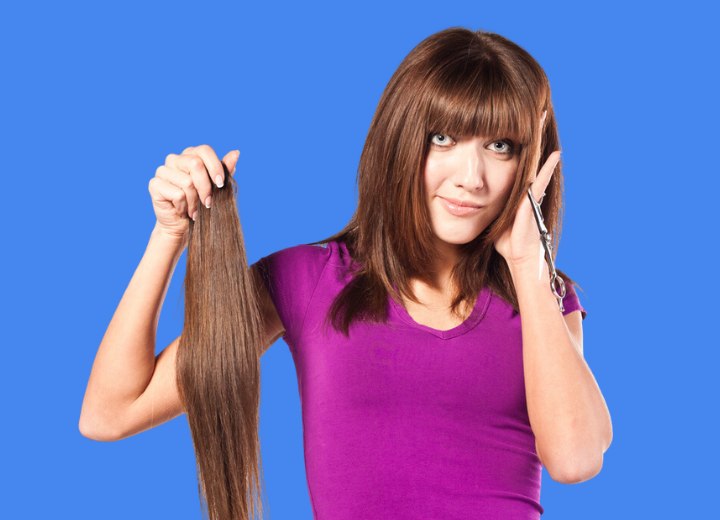How to Destroy Your Hair

Damaged hair shows the following signs: it is usually without shine and limp, often dry, brittle, can have split ends, and can break easily. Basically, it looks and feels lifeless and like straw with a fuzzy texture and uneven ends. It also tends to tangle much more than healthy hair. Tangles and knots also increase the risk of breakage.
Chemicals
Too much, too long or too often is the mantra for a guaranteed destruction of your hair by chemicals. Going over the recommended processing time for a product will not make it work better or more intensely. It will only dry out and damage your hair. Damage to hair is cumulative. Harsh treatments that are repeated too often will affect your hair.
Hair coloring and perms look great when done right. But if you are a fan of chemical modifications to the wave pattern or the color of your hair, be sure to use extreme caution. The danger level here is very high, as damage can occur on many levels, especially when these processes are done at home and without proper preparation of the hair and aftercare.
Bleaching is enemy number one when it comes to chemical processes. It depletes the hair not only of pigments but of pretty much everything else that keeps it elastic, shiny, and healthy. Once your hair is lightened all over, you'll have to maintain the color by re-bleaching the darker roots when they grow out.
Over time, there is no positive outcome for this. As an alternative, try highlights that do not bleach every single hair, but only a portion of your mane, and the new growth does not show as quickly, so that the gap between treatments can be wider.
Why do chemical treatments hurt the hair so much? In simple terms, the chemicals in dyes penetrate deep into the hair and change its structure by removing color molecules and proteins. Most often, the protective cuticle layer of the hair remains raised, making the hair porous and susceptible to drying out and breaking. Perms and dyes also alter the acidity balance, the pH of the hair. The damage can often not be reversed or repaired, and cutting the hair might be the only option in the end.

Culprit number two in the danger zone for hair is the heat styling tools. Curling irons, flat irons, blow dryers, or heated curlers all carry the danger of overheating the hair and thus drying it out, or even burning it. Use them sparingly and start with the lowest heat setting, working your way up to find the lowest temperature that works for your hair.
Careful with the Cuts
You may think haircuts are safe. They usually are, but watch out for overly creative hairdressers who put their imagination and ideas above the health of your hair or your real needs. Many cutting techniques, especially for texturing, can easily be overdone.
Slicing in razor-cuts, thinning of hair, or extreme layering can also have long-term effects that are hard to undo. Combined with chemical processes, the damage will occur even quicker. Why can over-cutting and texturing damage the hair? If the hair is too thin at the ends, it is more prone to being damaged by friction or by heat since the temperature of styling tools is not distributed as evenly.
Sun, Wind and Weather
Very common, especially in the summer months, is damaged hair due to the workings of Mother Nature and too much exposure to it. If you play in the sun unprotected, not only will your skin suffer.
Ocean or swimming pool water dry out the hair even more, and the wind adds its own touch to the emerging fiasco. Conditioners, hats, scarves, and shady trees are all there for relief and prevention. Make sure to use them!
Continue reading ...